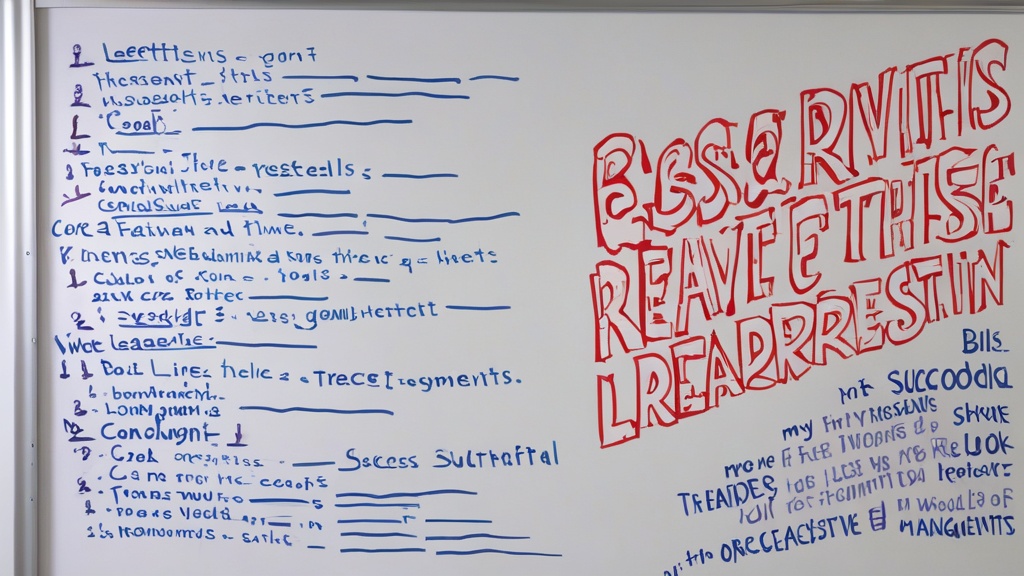I’ve spent more than ten years swimming in letters. A to Z, but mostly K, P, I, O, K, R. You know the drill. People keep asking me about the abbreviation for leadership, like there’s a single magic short form that sums up vision, values, strategy, communication, coaching, and all that messy human stuff. In my experience, there isn’t one. There are many. And we use them because our brains love shortcuts. Teams need speed. The C-suite demands slides. Managers want checklists. A team lead wants a simple map. And honestly, sometimes I want a nap. But sure, let’s talk about leadership acronyms, management abbreviations, C-suite titles, and all those tiny letter stacks that somehow run whole companies.
Why We Squash Big Ideas Into Small Letters

I learned fast that letters buy attention. Say “Key Performance Indicators,” and eyes glaze over. Say “KPI,” and people nod, like, yes, we are very busy. I’m not saying it’s good. I’m saying it works. You can fight it, or you can use it wisely. I choose wisely (most days).
Our Brains Crave Shortcuts
It’s simple. Short words stick. Long speeches do not. I’ve always found that when I hand a new manager a tiny list—SMART, RACI, OKR—they feel calm. Letters act like handles. People grab them. They carry them into meetings. They repeat them at standups. And boom, we have shared language.
Meetings Move Faster (Kind Of)
Also, we don’t have time. I manage teams. I teach workshops. I coach leaders. We need simple signals. If I say “Let’s RACI this,” my team knows we’re mapping who does what. If I say “Let’s do a SWOT,” they know we’re looking at strengths, weaknesses, opportunities, threats. We skip five minutes of slow talking. That matters over months.
Letters I Use For Real (And Where They Fail)
Not every acronym deserves a badge. Some do. Some are noise. Below is the messy list I reach for. With honesty. And a little side-eye.
| Acronym | Plain meaning | How I actually use it |
|---|---|---|
| KPI | Key numbers that show progress | Top 3 metrics on one page. If we need 12 KPIs, we lost the plot. |
| OKR | Goals (Objectives) and their results (Key Results) | Quarterly focus. I cap teams at 2–3 Objectives. More = busywork. |
| SMART | Make goals Specific, Measurable, Achievable, Relevant, Time-bound | Great for junior managers. Also good when a goal sounds like a wish. |
| RACI | Who is Responsible, Accountable, Consulted, Informed | Use when people step on each other. Or no one owns anything. Which is often. |
| DACI | Driver, Approver, Contributors, Informed | Similar to RACI, but clearer on decision rights. Helpful with strong personalities. |
| SWOT | Strengths, Weaknesses, Opportunities, Threats | Kickoff tool. I do this fast on a whiteboard, then move. |
| LDRSHIP | US Army values: Loyalty, Duty, Respect, Selfless Service, Honor, Integrity, Personal Courage | Values check. I ask, “Which one does our culture ignore?” Painful, but useful. |
| VUCA | Volatile, Uncertain, Complex, Ambiguous | Good reminder that chaos is normal. Not an excuse. A clue. |
Do I love every one of these? No. I like tools that make action easier. If an acronym becomes a weapon (“But our KPI!”) or a shield (“We follow SMART!”), I push back. Real leadership is not hiding behind letters. It’s using them to point people in a clear direction.
Leader vs Manager: Yes, The Short Forms Matter
We also have titles and short forms for people. CEO, COO, CFO, CTO. C-suite soup. On tech teams, I see “TL” for team lead and “EM” for engineering manager. People keep asking if these short forms change behavior. Sometimes they do. Titles carry power. Power shapes action. But a strong TL with no title can beat a weak VP with ten. I’ve seen it, more than once.
What I Tell New Managers
Pick clarity over swagger. Explain your role in one sentence people can repeat. “I’m the Driver for delivery, and the Approver on scope.” That’s DACI language. Simple, not fancy. And it prevents turf wars before they start.
Values In Letters: The LDRSHIP Example
If you want to see values turned into clean letters, look at the US Army’s “LDRSHIP.” It stands for Loyalty, Duty, Respect, Selfless Service, Honor, Integrity, and Personal Courage. It’s neat, it’s strict, it’s bold. Here’s the page that breaks it down: LDRSHIP explained. I don’t run a battalion. I run teams of regular humans with snacks and deadlines. But I still borrow from it. Why? Because values get fuzzy fast. Letters make them concrete.
I’ll run a quick values check at the end of a tense project: Where did we show respect? Where did we miss integrity? Where did we need more courage? I don’t grade anyone. I just get real answers. That changes the next sprint more than any poster on a wall.
Abbreviations Can Be Tiny Compasses
Here’s the thing. The best short forms act like little compasses. They point. They don’t replace thinking. They don’t block questions. They remind us what good looks like. When we treat them like laws, we get stuck. When we treat them like cues, we move.
My Simple Cue Stack
- SMART goals for focus
- OKRs for direction, quarterly
- RACI or DACI for ownership
- KPI for progress checks
- Values (pick your set) for how we behave
That’s it. Not a thousand letters. A handful. Clear enough that a new teammate can learn them in an afternoon. I’ve seen high school interns use these better than seasoned directors who live in PowerPoint.
When Letters Go Wrong (Fun Stories, Real Lessons)
Story one. A team spent two weeks arguing OKRs. Zero time building the thing. They loved word-smithing the Objective line. It became poetry. It also became nothing. We shipped late. My take: set a draft OKR in 30 minutes. Ship something. Adjust later.
Story two. A project had five people “Accountable” in a RACI. That defeats the point. If everyone is accountable, no one is. We redid it. One A. One person who loses sleep if it fails. The project woke up too.
Story three. A leader waved LDRSHIP during layoffs but skipped respect and honesty in how they told people. Letters don’t heal a broken moment. Actions do. People remember how you behave, not the acronym you quote.
Quick Comparison: RACI vs DACI
People ask me which one to use. My answer: it depends on the team, the project, and the power map. Here’s how I explain it, simply.
| Model | Key roles | Best when | Watch out for |
|---|---|---|---|
| RACI | Responsible, Accountable, Consulted, Informed | You need clarity on work and ownership | Too many Consulted slows work. One Accountable, always. |
| DACI | Driver, Approver, Contributors, Informed | You need clear decision rights | Approver can become a bottleneck. Time-box decisions. |
In my experience, product teams like DACI because decisions are the main pain. Ops teams like RACI because tasks and handoffs matter more. Try both. Keep the one your team actually uses without grumbling.
What The Word “Leadership” Actually Means (Without The Hype)
I don’t love dictionary fights, but sometimes the basics help. If you want a broad view without the fluff, this page does the job: Leadership, defined and studied. Tons of theories. Many smart people. My short take though? Leadership is the messy art of getting humans to move toward a shared goal without losing the plot or their sanity. That’s it. The tools—acronyms, models, frameworks—are just helpers.
Build Your Own Tiny Codes (Yes, You Can)
Teams change. Roles shift. Your context might need its own little letter stacks. I’ve built a few with teams and they stick when we keep them small, real, and tied to how we work, not to posters.
How I Make A Team Acronym
- We pick 3–5 words that guide action. Not too many.
- We say them out loud. If they sound weird, we change them.
- We make them visible in docs, standups, and retros.
- We test them on a new teammate. If they get it fast, good.
A Real Example
One product team I coached made “PACE”: Prioritize, Align, Commit, Execute. We used it to throttle chaos. Every sprint, we checked PACE. Did we prioritize? Are we aligned? Did we commit to the right work? Are we actually executing? So simple. Worked for a full year.
Training That Sticks (Because Letters Alone Don’t)
Here’s my secret: acronyms don’t teach people. Practice does. I’ve built workshops that used OKRs, RACI, and values sheets. The sessions only stuck when we ran drills and follow-ups. If you want a quick method I recommend, read this: three phases that make training stick: prep, practice, follow-up. I use that flow for new managers. It keeps the ideas alive past day one.
My 10-Minute Playbook For New Leads
If you’re new to leading, and you want a simple path, this is the one I give people. It’s low-friction. It avoids jargon. It works.
- Pick 1–2 goals for the quarter. Write them as OKRs or simple sentences. Share with the team.
- Run a fast RACI or DACI for your key project. Put names, not roles.
- Choose 3 values. Put them on your sprint board. Make them visible.
- Pick 3 KPIs. Not 10. Look at them weekly. Adjust work if needed.
- Do a five-minute retro every Friday. What went well? What didn’t? What will we change?
- Talk to your manager and your team about decision rights. Avoid surprises.
How Many Letters Is Too Many?
Good question. My limit: if a new intern can’t learn your system in a day, it’s too heavy. If your team spends more time tagging docs with acronyms than building, it’s also too heavy. And if people start using the letters to avoid hard talks, you need to reset.
A Quick Glossary (Low Jargon, Pinky Promise)

- KPI: Your scoreboard. Few numbers. Easy to see.
- OKR: Your big goals and how you’ll measure them.
- SMART: A way to write clear goals that don’t wobble.
- RACI: A map showing who does, who owns, who you ask, who you tell.
- DACI: A map showing who drives, who decides, who helps, who you inform.
- SWOT: A fast scan of what’s strong, weak, possible, and risky.
- LDRSHIP: A values set used by the Army; good for a values check.
- VUCA: A word to say, “Things are messy. Keep calm and adapt.”
- TL/EM: Team Lead / Engineering Manager. Useful short forms on tech teams.
What About One Perfect Short Form?
I get asked for a single abbreviation for leadership that sums it all up. Short answer: I don’t think that exists. Leaders lead humans, not spreadsheets. Humans need clarity, trust, and a little warmth. No three-letter bundle can deliver that by itself. You can build a small code that fits your team, sure. But you still have to show up, listen, and decide.
Picking Letters For Your Culture
When I join a new team, I watch what they already say. Some teams already speak in OKRs. Others do not. I don’t force my favorites. I try theirs first. If it works, I keep it. If it causes confusion, I switch tools. There’s no prize for using the fanciest acronym. The prize is a calm team that ships good work and sleeps okay.
Make It Visible, Keep It Human
The fastest way I’ve found to make acronyms useful is to put them where people look. Dashboards. Standups. One-pagers. The second-fastest way is to tie them to moments. “We do a quick SWOT in kickoff.” “We set OKRs on day one.” “We review KPIs on Friday.” This rhythm makes the letters normal. No drama. No magic. Just a tiny part of the habit stack.
What I Think About Over-Formalization
I’ve seen teams try to certify their acronyms, like they’re sacred. Fancy templates. Locked forms. It looks serious. It also freezes learning. Keep it light. Edit as you go. Let people tweak the model to fit the work. That’s how teams grow.
Reality Check: Acronyms Don’t Replace Trust
Small note, big impact. If a team doesn’t trust the leader, all the letter tools fall flat. People will do the form, nod in the meeting, then go do their own plan. Trust first. Letters second. And you build trust by keeping promises, giving credit, and telling the truth even when it stings.
Leadership In Chaos (Yep, VUCA)
Markets shift. Plans break. Supply chains sneeze. Use simple tools to stay steady. A focused KPI set. One page of OKRs. A RACI on the hot project. And daily check-ins that are short and honest. In rough times, less talk, clearer action. That’s my rule.
A Tiny Field Guide You Can Print
- Before a new quarter: write OKRs, 2–3 only.
- Before a big project: pick RACI or DACI, fill names.
- Each week: check KPIs, adjust.
- Each sprint: five-minute retro. One change, not ten.
- Each month: values review. Where did we live them? Where did we drift?
Random Notes I Wish Someone Told Me
- Don’t let acronyms become a gate. Use them as a door.
- People come first, process second. Always.
- Short forms help the busy keep up. They don’t make sluggish teams fast.
- Start small. Teach one tool well. Add more only when people ask.
- It’s okay to drop a tool that isn’t helping. No loyalty to letters.
On Industry In-Jokes (Because We Need A Laugh)
If you’ve ever played KPI bingo in a meeting, same. If you’ve ever seen a “strategic OKR” that reads like a horoscope, same. If you’ve ever watched a RACI that made everyone Responsible and no one Accountable, yep. Laugh, fix it, move on. We’re not building rockets most days. We’re building teams. Keep it human.
A Nudge On Reading And Resources
If you want to wander deeper, you can. There’s a lot out there. The basics on leadership are laid out well here: Leadership overview. For a values model in letter form, this page has a clean breakdown: LDRSHIP. Read, borrow, then adapt. That’s the game.
One More Time, For The Folks In The Back
Letters are tools. You run them. They don’t run you. Use them to point the team, keep the work tight, and remind everyone how you treat each other. That’s enough. The rest is your voice, your choices, and your daily follow-through. And if someone asks you again for the abbreviation for leadership like it’s a secret passcode, smile. Tell them the passcode is “do the work, with care.” Then offer them a coffee. Works better than a buzzword, every time.
FAQs
- Is there one official short form for leadership? — Not really. Different groups use different ones. Pick what fits your team and use it well.
- Should I use OKRs or KPIs first? — Start with KPIs to see where you are. Add OKRs when you want to change where you’re going.
- RACI vs DACI: which is better? — Use RACI for tasks and handoffs. Use DACI for decisions. Try both. Keep the one your team likes.
- How many acronyms should my team use? — A handful. If a new person can’t learn them in a day, you have too many.
- Can acronyms fix a weak culture? — No. They help with clarity. Trust and honesty fix culture. The rest is window dressing.
Anyway, I’m hungry. Going to grab a snack and not overthink my OKRs for choosing a sandwich. KPIs: crumbs per minute. Kidding. Sort of.

Hey, I’m Lucas. My blog explores the patterns and connects the dots between tech, business, and gaming. If you’re a curious mind who loves to see how different worlds intersect, you’re in the right place.




Acronyms can simplify complex concepts and improve communication in organizations, making them essential tools for leaders.
Acronyms make leadership tangible and teams efficient. Condensed jargon = shared language and progress!
What’s your go-to leadership acronym for balancing vision, values, and strategy in your team meetings?